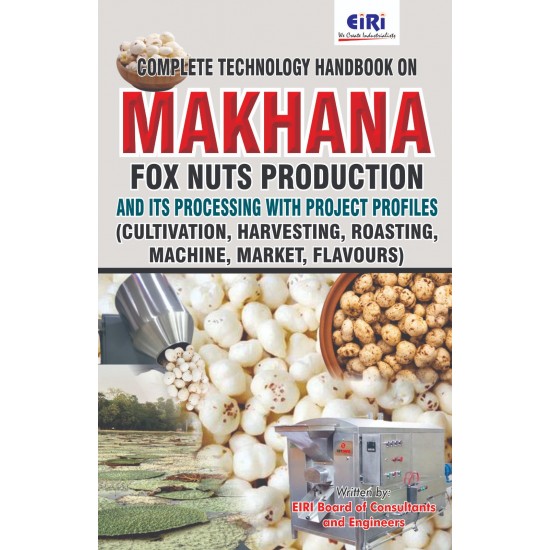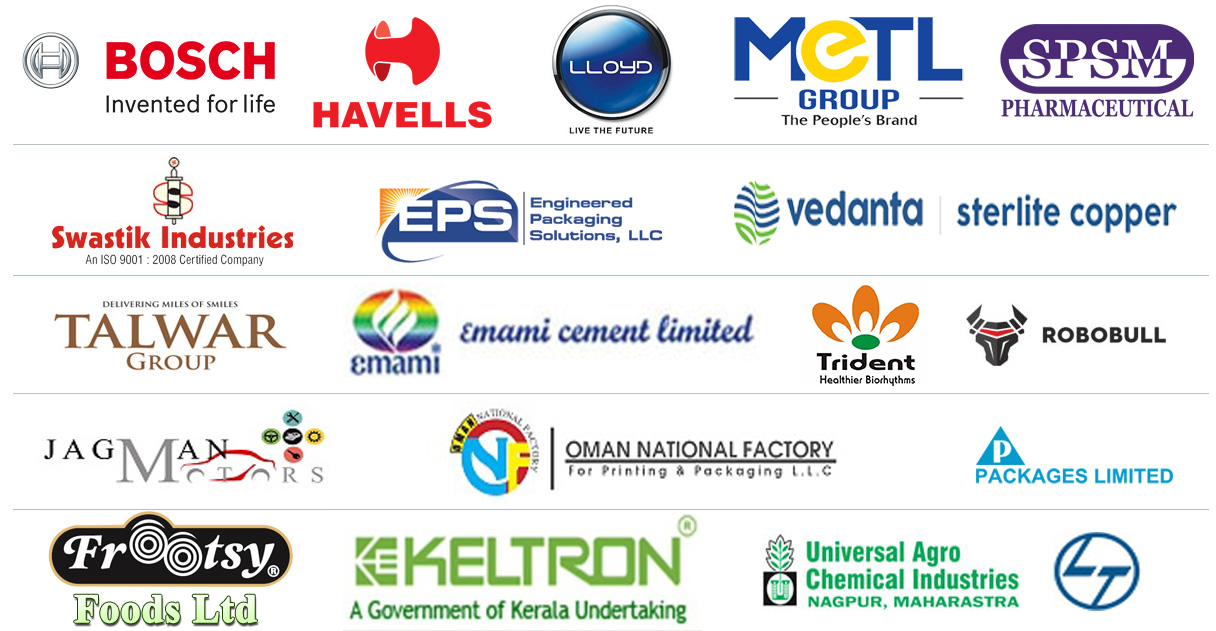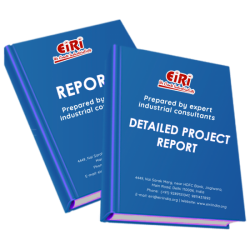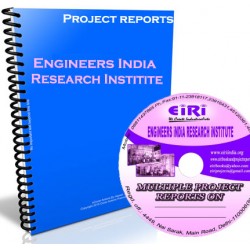Complete Technology Handbook on Makhana (Fox Nuts) Production and its Processing with Project Profiles (Cultivation, Harvesting, Roasting, Machinery, Market, Flavours)

- More than 45 years of experience
- Managed by expert industrial consultants
- ISO 9001-2015 Certified
- Registered under MSME, UAM No: DL01E0012000
- 24/5 Research Support
Get your quesries resolved from an industry expert. Ask your queries before report or book purchase. - Custom Research Service
Speak to the our consultant to design an exclusive study to serve your research needs. - Quality Assurance
All reports are prepared by highly qualified consultants & verified by a panel of experts. - Information Security
Your personal & confidential information is safe & secure.
Complete Technology Handbook on Makhana (Fox Nuts) Production and its Processing with Project Profiles (Cultivation, Harvesting, Roasting, Machinery, Market, Flavours)
This book contains chapters on: Introduction: Understanding Lotus Seeds, Varieties and Types of Product, What is Fox Nut? and How Makhana is Made?, Cultivation of Makhana and Botanical Characteristic, Makhana Cultivation in Pond Ecosystem and Agricultural Fields, Integrated Farming, Harvesting and Drying of Fox Nuts, Methods of Makhana Production, Economics of Makhana Cultivation, Technologies for Makhana Processing, Constraints and Technologies for Makhana Harvesting, Machineries and Equipment, Health, Nutritional Information and Aspects, Bioactive Metabolites Identification of the Fox Nut and Broken Millet-based Nutritional Bar using HR-MS, Physical Characterization and Mass Modeling of Traditionally Popped Makhana (Euryale ferox Salisbury) Variety, Physical and Aerodynamic Properties of Makhana, Physio-Chemical and Hygroscopic Characteristics of Fox Nut (Euryale Ferox), Chemical, Textural, Antioxidant Potential and Sensory Characterization of Foxnut Powder, New Opportunities for Fox Nut Farming, Makhana Supply Chain Analysis, Finished and Value Added Product, Grades of Makhana, Quality of Makhana, Threat of Substitutes and India Makhana Market, Opportunity for Micro/ Unorganized Enterprise, Scheme for Growth of Micro Food Enterprise, Starting Your Makhana Business, Regulatory and Statutory Clearances Required, Good Manufacturing Practices/Good Hygiene Practices, Hazard Analysis and Critical Control Point, Market Potential and Exports of Makhana, Flavour Innovation by Creating Unique Makhana Products, Peri Peri Makhana Development, Roasted and Flavoured Makhana, Plant Economics of Processing of Makhana and Value Addition thereafter such as Roasted Makhana, Flavour Makhana, Makhana Chips, Makhana Kheer.
Chapter 1
Introduction: Understanding
- Lotus Seeds
- Introduction
- Leaves
- Fruits and Seeds
- Flowers
- Rhizomes
- Physicochemical Properties
- Alkaloids and Flavonoids
- Antioxidant
Chapter 2
Varieties and Types of Product
- Organic Makhana
- Inorganic Makhana
- Swarna Vaidehi-First Ever
- Variety of Makhana
- Released in India
- Consumption of Types of Makhana
- Marketing strategy
- Contents-cum-Index
- Different Varieties of Makhana Dishes
- Value Added Products & By Products
- Value Added Products
- Popped Makhana
- Makhana Snacks
- Instant Makhana Kheer Mix
- Makhana Flour or Powder:
- Makhana Ready to Eat Breakfast Cereal
- Makhana Baby Foods or Porridge
- Makhana Barfi
- Makhana Kalakand
- Makhana Bread/Bun
- By Product
Chapter 3
What is Fox Nut? and How Makhana is Made?
- How makhana is made?
- Scraping of makhana seeds from lake bottom
- Cleaning and Drying the Seeds
- Two Stage Roasting of dried seeds
- Initial Gentle Roasting
- Resting Period, also known as tempering
- The Second Roasting
- Popping of the roasted seeds
- Listening for the Pop
- Technique and Skill
- Efficiency in Popping.
- Polishing and Grading
- Roasting in a Rotary
- Roaster
Chapter 4
Cultivation of Makhana and Botanical Characteristic
- Climate Suitable for Cultivation
- Crop Cultivation
- Steps of Cultivation
- Effect of makhana cropping system and soil fertility
- States in India where Makhana is grown
- Production of fox-nut in Bihar
- Government Impetus and Initiatives
- Traditional vs. Modern Makhana Cultivation
- Traditional Method (Pond System)
- Modern Method (Field System)
- Challenges in Makhana Cultivation
- Life cycle of Makhana
- Stage One: Cultivating Makhana
- Stage Two: Makhana Harvesting
- Stage Three: Makhana Processing
- Botanical Classification
- Characteristics
Chapter 5
Makhana Cultivation in Pond Ecosystem and Agricultural Fields.
- Field Preparation.
- Direct Sowing Of Makhana
- Nursery Preparation
- Transplantation
- Manure & Fertilizer
- Water Management
- Flowering & Fruiting
- Harvesting
- Yield of Makhana.
- Benefits of Growing Fox Nut Plants
- Economic Prosperity:
- Nutrient-Rich Yield:
- Water Management:
- Biodiversity Boost:
- Medicinal Significance:
- Export Potential:
- The Future of Makhana Production and Consumption
- Increasing Demand and Search Results for Makhana
- Exploring Alternative Uses of Makhana
Chapter 6
Integrated Farming, Har-vesting and Drying of Fox Nuts
- Introduction
- Climate and morphology
- Crop cultivation
- Pond system
- Field system
- Integration of fishes and water chestnut with fox nut
- Time of Harvesting for makhana plant
- Constraints of Harvesting
- Efforts to Improve Makhana Harvesting Process
- How Fox nuts are harvested?
- Drying of Fox nuts
- Drying Under Sunlight
- Roasting & Popping
- How does climate affect the harvest?
- How are Fox nuts Roasted?
- How Fox nuts are prepared for use?
Chapter 7
Methods of Makhana Production
- Seed Collection
- Seeds Cleaning and Storage
- Makhana Grading
- Pre-Heating
- Seed Tempering
- Roasting and Popping of Seeds
- Polishing
- Packaging
- Tools and Equipment Used During Post Harvesting
- Makhana Process Reengineering
- Government role in scaling up Makhana Production
- Step-by-Step Process of Making Organic Makhana
- Sowing and Germination
- The Role of Gorgon Nuts
- Water Body Preparation .
- Harvesting .
- Heating and Popping
- Grading and Packaging .
Chapter 8
Economics of Makhana Cultivation
- Introduction
- Economic and Employment Impact
- Central Government Schemes for Makhana
- Bihar State Government Initiatives
- Makhana management through clusters
- Experience in Makhana cultivation
- Land holding size
- Marketing and Value Chain of Makhana .
Chapter 9
Technologies for Makhana Processing
- Constraints and technologies for Makhana Processing
- Steps involved in Makhana processing
Chapter 10
Constraints and Technolo-gies for Makhana Harvesting
- Introduction
- Processing Constraints .
- Lack of processing machinery and equipment .
- Lack of credit facility
- Dependence on climate
- Health risk
- Marketing Constraints .
- Price fluctuation .
- Lack of transportation facility
- Unorganised and inadequate market
- Technological transformation in Harvesting process of Makhana
- Mechanical Makhana HarvestingA technological break through
- Efforts to Improve Makhana Harvesting Process
Chapter 11
Machineries and Equip-ment
- Makhana Popping Machine
- KG
- Makhana Seed Washing System
- Makhana Seed Grading System
- Makhana Seed Drying System .
- Makhana Seed Roasting Machines
- Popped Makhana Grading Machine
- Roasted Makhana Making Machine
- Size Grader machine
- Hot air dryer
- Rotary Roaster
- Sieve Separator
- Filling and packaging machine
- Seasoning Machine
- Properties of Seasoning Machine
- Conveyer machine
Chapter 12
Health, Nutritional Information and Aspects
- Nutritional Value of Makhana: Calories and Vitamins in Makhana
- Health Benefits of Eating Makhana Daily
- Protein Content
- Anti-ageing properties
- Heart-Friendly
- High Fibre
- Detoxifying Agents
- Fertility Support
- Low Glycemic Index
- Gluten-Free
- Weight Management .
- Anti-Inflammatory Properties
- Ayurvedic perspective on Makhana
- Makhana Benefits
- Makhana for Weight Loss
- Foxnut as traditional medicine.
- Foxnut as an antiaging
- Foxnut as an anti-diabetic
- Foxnut as an antioxidant.
Chapter 13
Bioactive Metabolites Identification of the Fox Nut and Broken Millet-based Nutritional Barusing HR-MS
- HR-MS analysis of bar.
- MW: Calculated molecularweight; M/Z: Mass/Charge;RT: Retention time; CVD:Cardiovascular disease;AIF: Anti-inflammatory activities.
Chapter 14
Physical Characterization and Mass Modeling of Traditionally Popped Makhana (Euryale ferox Salisbury) Variety
- Formulation of cookies
- Preparation of cookies
- Consumer acceptance
- Physical properties
- Colour measurement
- Texture
- Proximate analysis
- Mineral content
- Determination of bioactive compounds
- Total phenolic content
- Total flavonoid content
- Determination of antioxidant activity
- DPPH (2,2 diphenyl 1 picryl hydrazyl) antioxidant activity
- Reducing Power
- Metal chelating activity
- ABTS
- Amino acid profile
- FTIR analysis
- Statistical analysis
- Physico-chemical properties of raw material
- Consumer acceptance
- Physical parameters of cookies
- Proximates, mineral profile and bioactive compounds of cookies
- Amino acid profile of prepared cookies
- FTIR analysis
Chapter 15
Physical and Aerodynamic Properties of Makhana
- Physical Properties
- Dimensions
- Shape and Sphericity
- Density
- Porosity
- Angle of Repose
- Coefficient of Friction
- Test Weight
- Aerodynamic Properties .
- Terminal Velocity
- Drag Coefficient
- Moisture Content
- Key Aerodynamic Properties
- Terminal Velocity
- Drag Coefficient
- Shape and Size
- Moisture Content
- Factors Affecting Aerodynamic
- Properties
- Shape and Size
- Moisture Content
- Air Density
- Applications and Significance
- Engineering and Research
- Product Development
Chapter 16
Physio-Chemical and Hygroscopic Characteristics of Fox Nut (Euryale Ferox)
- Physio-Chemical of Fox Nut (Euryale Ferox)
- Proximate Composition
- Mineral Content
- Physicochemical Properties of Kernel Starch (EFKS):
- Other Notable Features
- Hygroscopic Characteristics of Fox Nut (Euryale Ferox)
- Key Features:
- Therapeutic Importance
- Nutritional Value
Chapter 17
Chemical, Textural, Anti-oxidant Potential andSensory Characterization of Foxnut Powder
- Chemical Composition
- Chemical Composition and Bakery Implications
- Textural Properties:
- Antioxidant Activity
- Textural Changes
- Factors Influencing Textural Changes
- Impact on Sensory Properties:
- Antioxidant Potential
- Nutritional Benefits
- Sensory and Textural Properties
- Consumer Acceptance.
- Applications in Bakery
- Sensory characterization of foxnut powder (FP)
- Texture
- Flavor .
- Appearance .
- Overall Acceptability
Chapter 18
New Opportunities for Fox Nut Farming
- Market Expansion and Diversification
- Sustainable and Innovative Farming Practices
- Benefits for Farmers
- Fox Nut Based Products Business Opportunities
- Snack Manufacturing.
- Elaboration
- Bakery and Confectionery
- Baked Goods
- Desserts
- Tips for Using Fox Nuts in Baking and Confectionery:
- Nutritional Supplements
- Minerals Summary
- opportunities in Ready-to-Eat Meals
- Opportunities in Ready-to-Eat Options
- opportunities Incorporating Makhana into Meals
- Benefits of Makhana
- Fox nut popularity in other countries
- Export Promotion Opportunities
- Current challenges faced by Bihar’s makhana industry
- Market opportunities of Makhana Products
- Makhana Pop/Flakes
- Raw Makhana Pop
- Roasted Makhana Pop
- Derivatives (Flour, Powder,Bars, etc.)
- Fox Nut End-use
- Threat of New Entrants: Moderate.
- Bargaining Power of Suppliers:
- Low to Moderate
- Bargaining Power of Buyers:
- High
- Threat of Substitutes: High .
- Industry Rivalry: Moderate to High .
- India Fox Nut Trade (Export) Market Analysis
- India Fox Nut Market Competitive Analysis
- Key Companies in India Fox Nut Market include (Manufacturers/ Exporters/Brands)
- Future Outlook
Chapter 19
Makhana Supply Chain Analysis.
- Production and Processing:
- Supply Chain Participants
- Market Dynamics .
- Challenges and Opportunities
- Makhana Value Chain
- Procurement
- Storage & Transportation .
- Market structure .
- The benefits of packing and branding .
- Makhana’s Emergence as an MSME Opportunity
- Prospects for Trading Entrepreneurs .
- Key steps for entrepreneurs include:
- Export Scenario and Global Demand .
- Opportunity for Indian MSME Entrepreneurs .
- Key Opportunities
- Government Support
Chapter 20
Finished and Value Added Product
- Value-Added Products
- Value addition due to change in Place.
- Value addition due to change in time
- Value Addition
- Popped makhana
- What are they?
- How are they made?
- What are the benefits?
- How can they be enjoyed?
- Considerations
- Salted makhana
- Makhana Production Process
- Business Models
- Key Aspects of Salted Makhana Manufacturing
- Roasted makhana
- Flavors and Variations
- Manufacturing Technology
- Makhana vermicelli
- Raw Makhana Preparation
- Roasting
- Optional Flavoring and Coating
- Vermicelli Production
- Packaging:
- Makhana kheer mix
Chapter 21
Grades of Makhana
- Grading the Seeds of Makhana
- Makhana powder
- The role played by various actors of value chain is as follows:
Chapter 22
Quality of Makhana
- Nutritional Value and Composition:
- Plant Contents and Quality .
- Uses and Applications:
- Cultivation and Production
- Antioxidant activity
- Antimicrobial Action
- Antidiabetic activity
- Anti-aging activity
- Hepatoprotective activity
- Anticancer activity
- Antidepressant activity
- Anti-melanogenic activity
- Cardioprotective activity
- Foxnut as a superfood .
Chapter 23
Threat of Substitutes and India Makhana Market
- The Fox Nuts Makhana market
- Major Drivers
- Existing Restraints
- Emerging Opportunities
- Impact of Artificial Intelligence (AI) in Fox Nuts Makhana Market
- Fox Nuts Makhana Market Segment Insights
- Type Segment Analysis
- Nature Segment Analysis
- Distribution Channel Segment Analysis
- Application Segment Analysis
- Regional Outlook
- Segments
- Type..
- Nature
- Distributional Channel
- Application
- Competitive Landscape
Chapter 24
Opportunity for Micro/Unorganized Enterprise.
- Breakdown of the opportunities:
- Key Considerations:
- Scheme for Growth of Micro Food Enterprises
- Assistance available to Micro Food Processing Enterprises under PMFME Scheme
- Opportunity for Indian MSME Entrepreneurs .
- Key Opportunities
- Government Support
Chapter 25
Scheme for Growth of Micro Food Enterprise.
- Aims and Objectives
- The PM FME Scheme
- Salient Features of the Scheme .
- Marketing and Branding Support
- Capacity Building (ODOP)
- Seed Capital for SHGs
- Support for Clusters and Groups
- Impact .
- Eligibility
- Eligibility criteria for individual micro-enterprises
- Eligibility Criteria for Co-operatives/FPOs
- Eligibility Criteria for Seed Capital for SHGs
- Eligibility Criteria for Credit Linked Grant for Capital Investment for SHGs:
- Eligibility Criteria for Branding and Marketing Support
- Eligibility Criteria for Support to National Institutions for Capacity Building & Research:
- Eligibility Criteria for Support to State-Level Technical Institutions for Capacity Building & Research:
- Government Initiatives to Boost Makhana Industry
- Overcoming Challenges for Industry Growth
- Key Features of PMFME for Makhana
- Financial Support
- Capacity Building
- Support for Formalization
- One District One Product (ODOP) Approach .
- Marketing Support
- Institutional Support
- Makhana Vikas Yojona
- Makhana Board
Chapter 26
Starting Your Makhana Business
- Makhana Factory: The Rise of a Superfood Industry in Bihar
- Market Demand & Growth of Makhana
- India’s Market Trends
- Export Opportunities
- Role as a Superfood
- Business Ideas in Makhana Processing
- Understanding the Demand for Makhana
- Step 1: Research and Understand the Market
- Step 2: Choose
- Your Makhana Business Model
- Step 3: Sourcing and Cultivation of Makhana
- Step 4: Setting Up the Processing Unit
- Step 5: Adding Flavors and Innovation
- Step 6: Quality Control and Compliance .
- Step 7: Packaging and Branding .
- Step 8: Distribution and Market Entry
- Step 9: Profitability and Sustainability . Which country imports Makhana from India?
- How to start a Makhana Trading Business?
- Makhana Usage in Different Food Segments
- Distribution Channels for Makhana-Based Products
- State-Wise Business Opportunities in Makhana Production
- Government Support & Schemes for Makhana Business
- Essential Equipment for a Makhana Processing Unit Setup
- Financial Aspects of Makhana Business Opportu- nities
- Challenges and Opportunities in Makhana Business
- Challenges
- Opportunities:
- Processing Steps of Makhana
Chapter 27
Regulatory and Statutory Clearances Required
- Step 1: Choosing the Right Business Structure
- Sole Proprietorship .
- Partnership
- Private Limited Company
- Public Limited Company
- Step 2: Registering Your Business with Relevant Authorities
- Registration
- Goods and Services Tax (GST) Registration
- Import Export Code (IEC) Registration
- Other Registrations and Licenses
- Step 3: Acquiring Necessary Licenses and Permits
- Factory License .
- Pollution Control Board Consent Certificate
- Fire Safety Certificate
- Other Industry-Specific Licenses and Permits
- Step 4: Complying with Labor Laws and Employment Regulations
- Labor Laws in India
- Employee State Insurance (ESI) Registration
- Provident Fund (PF) Registration
- Compliance with Employment Contracts and Benefits
- Ensuring Health and Safety of Employees
- Maintaining Employment Records
- Step 5: Ensuring Compliance with Environmental Regulations
- Environmental Regulations in the Manufacturing Industry
- Conducting Environmental Impact Assessments (EIA)
- Obtaining Hazardous Waste Management Authorization
- Implementing Pollution Control Measures:
- Waste Management and Recycling
- Continuous Compliance Monitoring and Reporting:
- FSSAI Registration Required
- Food Safety and Standards Authority of India (FSSAI)
- Benefits of the New Food Safety & Standard Act
- Requirements for FSSAI Registration
- Documents Required
- Requirements for FSSAI State & Central License
- Applicable for Food Business Operators applying for Distributor, Marketer, Retailer, Supplier & Wholesale License.
- Applicable for Food Business Operators applying for Exporter License.
- How to apply for FSSAI registration ?
- Procedure for Registration
- Procedure for Licensing
Chapter 28
Good Manufacturing Practices/Good Hygiene Practices .
- Good Manufacturing Practices
- Difference between GMP and cGMP .
- Purpose of GHP in Food Safety .
- Good Manufacturing Practices
- (GMP) in the Food Industry
- Good hygiene practices
- Key Elements of Good Hygiene Practices:
- Good Manufacturing Practices/ Good Hygiene
- Practices .
- Sanitary and Hygienic Requirements for FoodManufacturer/ Processor/Handler
- General requirement on hygeinic and sanitary practices to be followed by all food business operators applying for license
- Location and surroundings
- Layout and design of food establishment premises
- Equipment & Containers
- Facilities .
- Food operations and controls
- Food Packaging
- Management and supervision
- Testing Facilities
- Audit, Documentation and Recordsd
- Sanitation and maintenance of establishment premises
- Personal Hygiene
- Product Information and Consumer Awarness
- Training
Chapter 29
Hazard Analysis and Critical Control Point
- Key Principles
- Benefits
- Documentation shall include (as a minimum)
Chapter 30
Market Potential and Exports of Makhana
- India Makhana Market Segmentation
- India Makhana Market Analysis
- Market Growth Drivers
- Market Challenges
- India Makhana Market Future Outlook
- Future Market Opportunities
- Quality Standards and Certifications for Makhana Export
- Emerging Business Opportunities in Makhana
- Major Destination To Export of Makhana From India
- Top Makhana Exporters in India
Chapter 31
Flavour Innovation by Creating Unique Makhana Products
- Introduction
- Raw Material
- Breakdown of ideas
- Unique Product Offering
- Makhana in other products:
Chapter 32
Peri Peri Makhana Devel-opment
- Main Ingredients
- Makhana (Puffed Lotus Seeds)
- Peri Peri Seasoning:
- Peri Peri Masala
- Peri peri masala powder
- Peri Peri Makhana Step By Step .
Chapter 33
Roasted and Flavoured Makhana
- Protein & Calcium Rich
- Protein
- Calcium
- Other Benefits
- Development of Foxnut (Makhana) Bread
Chapter 34
Plant Economics of Processing of Makhana and Value Addition thereafter such as Roasted Makhana,
Flavour Makhana, Makhana Chips, Makhana Kheer
- Plant Economics
- Plant & Machinery
- Total Capital Investment
- Turn over
- Rate of Return
- Break Even Point
How to Make Project Report?
Detailed Project Report (DPR) includes Present Market Position and Expected Future Demand, Technology, Manufacturing Process, Investment Opportunity, Plant Economics and Project Financials. comprehensive analysis from industry covering detailed reporting and evaluates the position of the industry by providing insights to the SWOT analysis of the industry.
Each report include Plant Capacity, requirement of Land & Building, Plant & Machinery, Flow Sheet Diagram, Raw Materials detail with suppliers list, Total Capital Investment along with detailed calculation on Rate of Return, Break-Even Analysis and Profitability Analysis. The report also provides a birds eye view of the global industry with details on projected market size and then progresses to evaluate the industry in detail.
We can prepare detailed project report on any industry as per your requirement.
We can also modify the project capacity and project cost as per your requirement. If you are planning to start a business, contact us today.
Detailed Project Report (DPR) gives you access to decisive data such as:
- Market growth drivers
- Factors limiting market growth
- Current market trends
- Market structure
- Key highlights
Overview of key market forces propelling and restraining market growth:
- Up-to-date analyses of market trends and technological improvements
- Pin-point analyses of market competition dynamics to offer you a competitive edge major competitors
- An array of graphics, BEP analysis of major industry segments
- Detailed analyses of industry trends
- A well-defined technological growth with an impact-analysis
- A clear understanding of the competitive landscape and key product segments
Need Customized Project Report?
- Ask for FREE project related details with our consultant/industry expert.
- Share your specific research requirements for customized project report.
- Request for due diligence and consumer centric studies.
- Still haven't found what you're looking for? Speak to our Custom Research Team
About Engineers India Research Institute:
Note: We can also prepare project report on any subject based on your requirement and country. If you need, we can modify the project capacity and project cost based on your requirement.
Our Clients

Our Approach
- Our research reports comprehensively cover Indian markets (can be modified as per your country), present investigation, standpoint and gauge for a time of five years*.
- The market conjectures are produced on the premise of optional research and are cross-accepted through associations with the business players
- We use dependable wellsprings of data and databases. What's more, data from such sources is handled by us and incorporated into the report
Why buy EIRI reports?
- Our project reports include detailed analysis that help to get industry Present Market Position and Expected Future Demand.
- Offer real analysis driving variables for the business and most recent business sector patterns in the business
- This report comprehends the present status of the business by clarifying a complete SWOT examination and investigation of the interest supply circumstance
- Report gives investigation and top to bottom money related correlation of real players/competitors
- The report gives gauges of key parameters which foresees the business execution
























